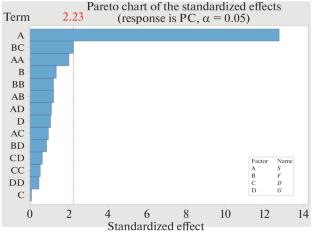Characteristics, Machinability Modeling, and Machining Performance Improvement of Graphene Reinforced Al-MMC Using CRSM and Utility Method
Abstract
A
bstract—The present experimental research examines the machinability of graphene-based aluminium metal matrix composite (AMMC) using a polycrystalline diamond (PCD) carbide-insert tool under a dry environment and compared it with that of pure aluminium. The AMMCs are synthesized by reinforcing 0, 0.5, 1, 2, and 3 wt % of graphene particles via the stir casting process and are characterized for their density, tensile, compression, micro-hardness, and morphological properties. Response optimization is performed to minimize the two surface roughness factors (Ra and Rz), power consumption and vibration (average acceleration). The central composite design-based response surface methodology (CRSM) is implemented for planification of the experimentation and subsequent higher-order regression response modelling of the actual process outputs is obtained. The characterization and machinability of AMMCs incorporating higher (1, 2, and 3 wt %) of graphene is first time investigated alongside multi-performance (Ra, Rz, power consumption, and vibration) optimization. The optimal combination of the process parameters resulting in simultaneous minimization of all the responses is also acquired using the Utility concept, compared to those obtained using the desirability approach in RSM and validated by conducting the confirmatory test. Improvement in surface roughness values (7.85 and 36.26% for Ra and Rz, respectively) and average acceleration (18.09%) are observed via the Utility method in comparison to the CRSM. Enhanced output results in comparison to pure aluminium are also observed.


 求助内容:
求助内容: 应助结果提醒方式:
应助结果提醒方式:


